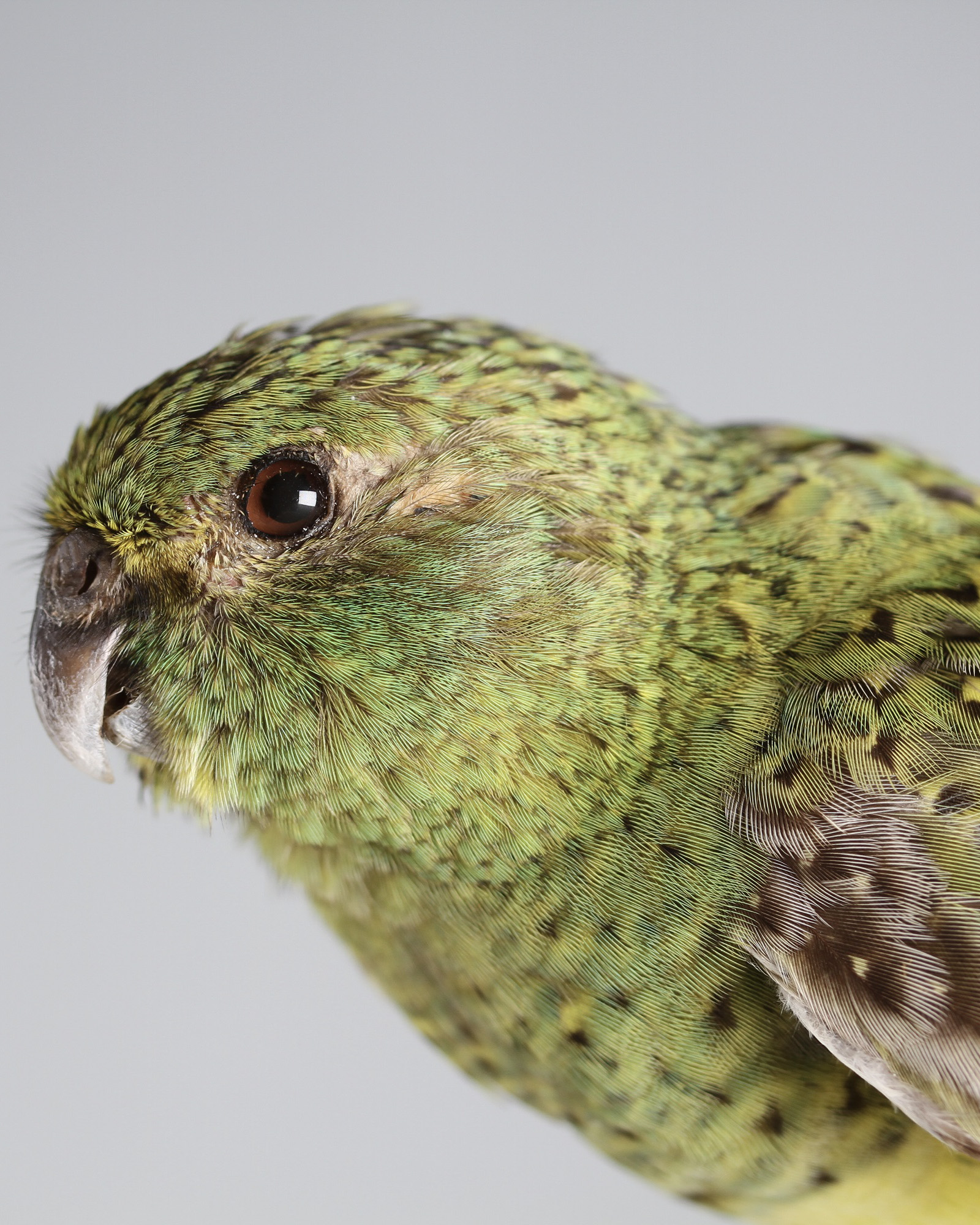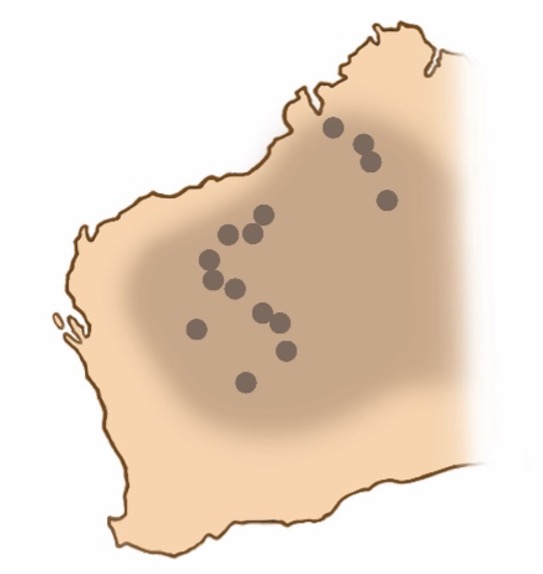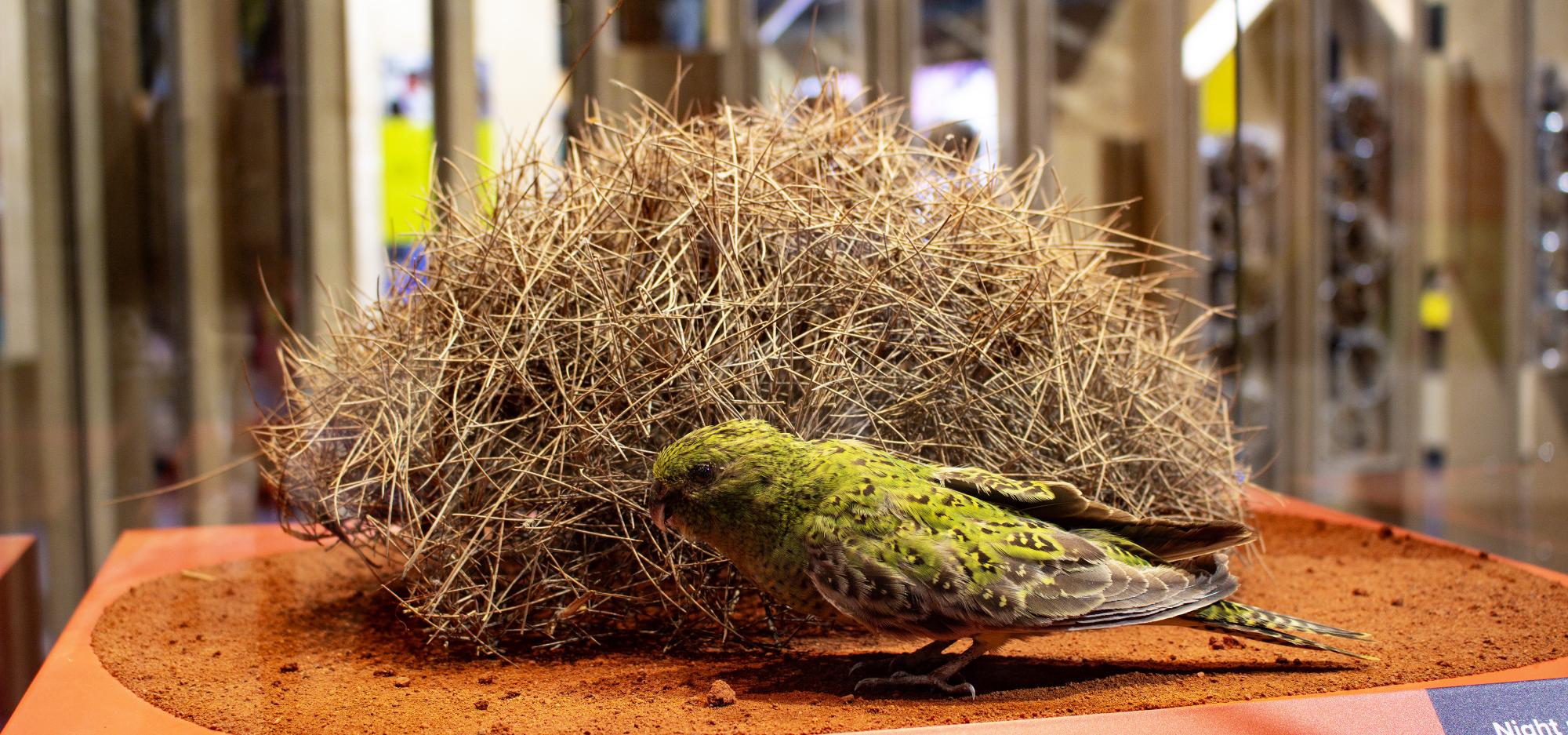Manyjilyjarra Name: Ngarrijirri
Scientific Name: Pezoporus occidentalis
Common Name: Night Parrot
Conservation status: Critically Endangered. This means a species has an extremely high chance of dying out or becoming extinct in the future.

Fun facts
- The Night Parrot is a mostly ground-dwelling parrot that’s only found in Australia. For around 100 years it was feared extinct.
- It weighs about 60gms, that’s the equivalent of a small chocolate bar and 10 paper clips!
- Night Parrots are very difficult to monitor and remain one of Australia’s most cryptic species. Cryptic meaning hard to see, well camouflaged.
- They are nocturnal and hide in clumps of spinifex by day and emerge after sunset to forage for food.
- A nest is built under the very prickly and spikey Triodia spinifex with 2-4 white eggs being produced.
- The Night Parrot was first described by ornithologist John Gould in 1861.
Not So Fun Facts
The distribution and numbers of Night Parrots declined severely after European settlement.
Best estimate is that there are around 200 Night Parrots left in the wild, but we don’t really know!
Critically Endangered: Schedule 1 – Western Australian Biodiversity Conservation Act 2016. Critically Endangered – Global IUCN Red List category
Threats to their survival
Habitat degradation from overgrazing, fire, feral cats and foxes.

Find me in the wild
In Western Australia the Night Parrot is found in the southern Kimberley, Pilbara and Gascoyne regions, Great Sandy and Gibson deserts and also the arid zone of eastern Australia.
Find me at the Museum
You can find me in the Diversity in Adversity section within the Wild Life Gallery on Level 3 of WA Museum Boola Bardip.
Read more about the Night Parrot here.
Map image: Distribution and Sightings of the Night Parrot. Night Parrot Information Sheet. WA Museum. March 2023
